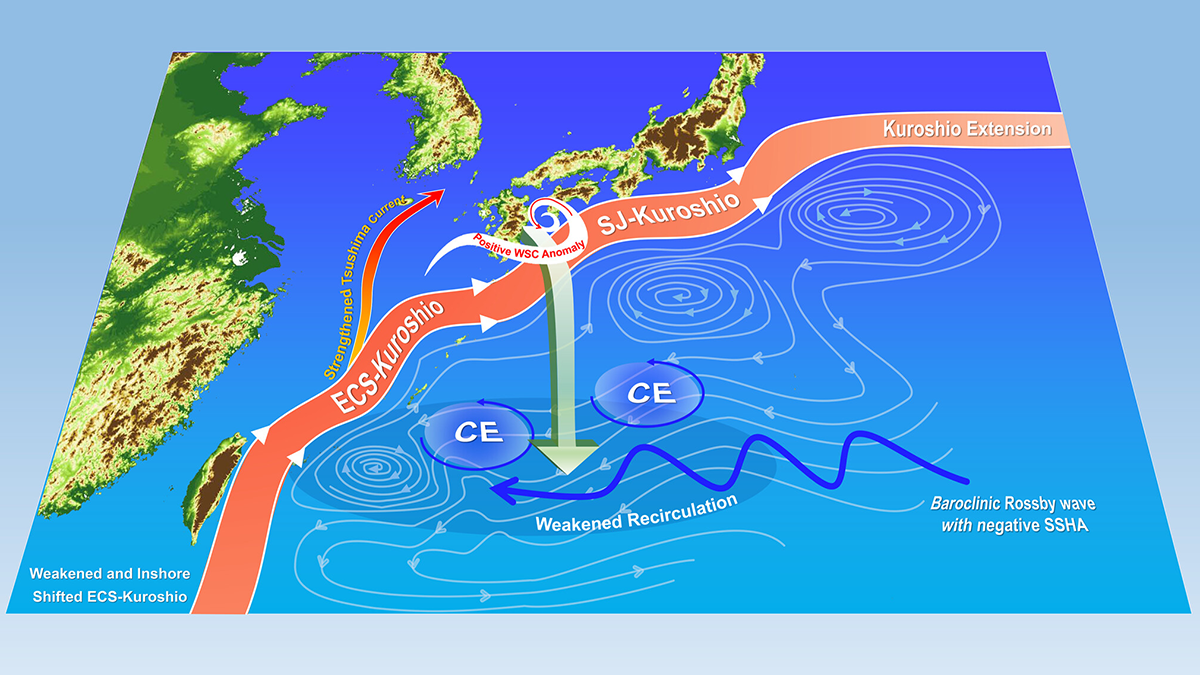Editors’ Highlights are summaries of recent papers by AGU’s journal editors.
Source: Journal of Geophysical Research: Oceans
Recent studies have pointed out that the El Niño Southern Oscillation (ENSO)-related atmospheric circulation pattern over the tropical Pacific Ocean has changed since the 2000s. The Central Pacific El Niño events increased, whereas Eastern Pacific El Niño decreased. These changes are particularly important for variabilities in climate over the western North Pacific through the Pacific-East Asian teleconnection and Indian Ocean capacitor effect. However, how these changes affect the oceanic processes in western North Pacific, including the Kuroshio, remains unclear.
By analyzing the ocean reanalysis dataset with mesoscale eddy database, Qiao et al. [2023] show that the Kuroshio in the East China Sea is modulated by wind-forced baroclinic Rossby waves and cyclonic eddies with approximately 3-year periods after 2005. These interannual variations in the Kuroshio intensity and position in the East China Sea coincide with more frequently occurring recent Central Pacific El Niño events. The results imply that the ENSO event in central Pacific can translate not only through the atmospheric teleconnection but also through the Kuroshio Current to its downstream regions.
Citation: Qiao, Y.-X., Nakamura, H., Tomita, T., Kako, S., Nishina, A., Zhu, X.-H., & Liu, Z.-J. (2023). ENSO-related interannual variability of the Kuroshio in the East China Sea since the mid-2000s. Journal of Geophysical Research: Oceans, 128, e2023JC019749. https://doi.org/10.1029/2023JC019749
—Takeyoshi Nagai, Editor, JGR: Oceans

